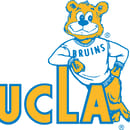Now, we’re already well aware of the fashion’s industry’s frustrating lack in body diversity in their advertising campaigns and runway shows. But have you noticed how today’s fashion trends and clothing shapes have become more and more biased towards a narrow range of body types as well? Because of this, many girls find themselves physically unable to add these trends to their own wardrobe and have a limited selection of choices in stores they once had full access to. Here are some of the biased trends I’m talking about:
Bralettes
They’re everywhere. Every store, under every possible outfit, peeking out in cute dresses or shirts. Don’t get me wrong, it’s an adorable look, but many of our more well-endowed ladies simply cannot wear a piece of thin or lacy fabric that does not have different sizes, support, or extension clasps.
High-Waisted Shorts with Crop Tops
For our more tall and lanky friends (like myself), crop tops only seem to cover a questionable amount. And “high-waisted” shorts don’t even reach our natural waist-line, resting awkwardly in between our hips and belly button. And when we do hike them up to our waist, we experience the unfortunate denim thong effect:
Bandeau Swimsuits
It would take law-defying physics for something like this to support anyone more than a B cup. Throw ocean waves into the mix and we’re all screwed, big-busted or not.
Printed Bell Bottoms
Even if those on the shorter end of the spectrum manage to find a pair that isn’t too long, the trendy elaborate prints easily overwhelm a petite frame, making one feel like they look like this:
Rompers
Tall girls and curvy girls both have trouble with this trend. Not long enough, not wide enough, not wearable at all.
One of the biggest culprits of this phenomenon? Brandy Melville stores. These stores and their “one size fits most” approach to sizing burst into the young women’s clothing scene within the last few years and has driven fashion trends among high school and college girls ever since. While their one-size approach works only for girls of a certain body type, their shape-restricting clothing styles also create new trends that other stores pick up, spreading many of the body biased fashions mentioned above. There has been a lot of criticism surrounding this idea of “one size fits all” lately (if you haven’t read the popular Buzzfeed article, check it out! http://www.buzzfeed.com/candacelowry/heres-what-one-size-fits-all-looks-like-on-all#.we9pzkd2Y), but not much discussion about these actual trends has stemmed from it.
These popular styles aren’t just a symptom of the fashion industry’s lack of diversity in body size; they also work to perpetuate the problem by ingraining this “ideal” shape into our culture, causing us to see one body as “more trendy” than another. As young women, the fashion industry’s target audience, we must be aware with how market trends affect our tastes and values, and most of all how the consequences of a biased outlook on body type affect our own self-esteem. Because at the end of the day, it’s just a fad. Trends come and go; it’s up to the consumers who push what will become popular next.


